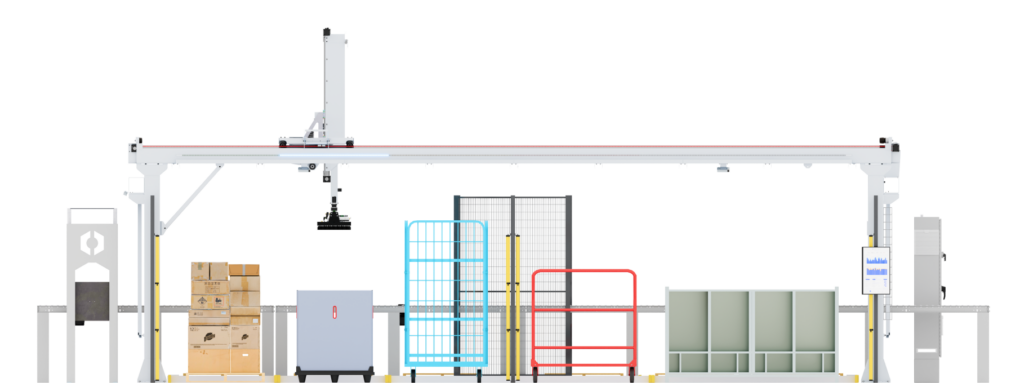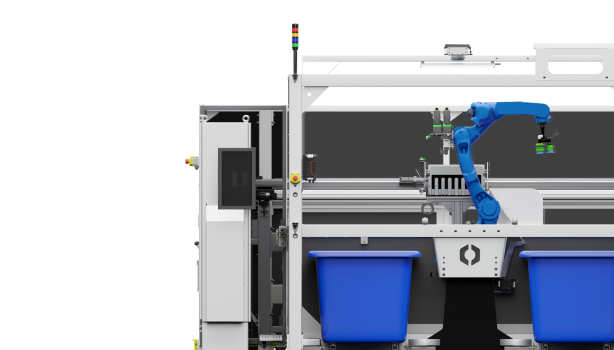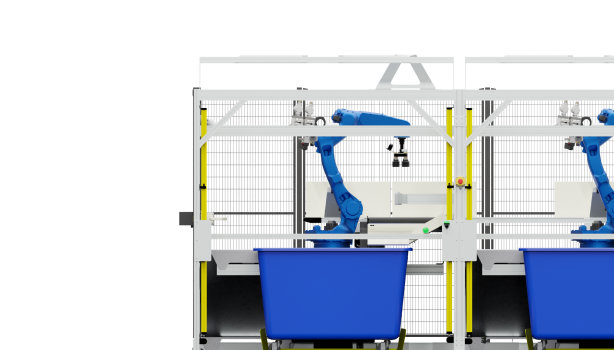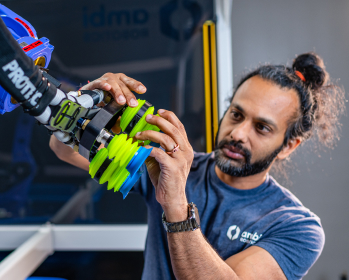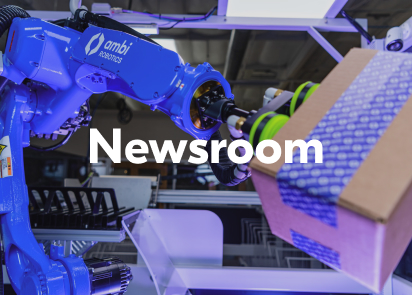Blog
How AI Saved Ecommerce During the Pandemic
So much has changed since the United States first shutdown due to the Coronavirus pandemic two years ago. During a time of unprecedented e-commerce acceleration and labor shortages, legacy pick-and-pack processes lack scalability to meet demand. While there are certainly negative consequences from the pandemic, it begs the question: “How has this changed the way we work, for the better?”
Rapid Acceleration of Robotics Strips Out Variability
Labor scarcity is a trend that skyrocketed during the pandemic, and the effects of the pandemic were devastating to companies that were not poised to implement robotic automation. When COVID-19 hit, fulfillment warehouses needed greater capacity overnight. Adding associates to the warehouse wasn’t an option, so when people couldn’t come to work, warehouses turned to robots to get the job done.
Warehouse work is injury-prone and tedious, and some jobs are executed in close quarters. For example, manual mail sack sorting requires three people to be in extremely close proximity, often bumping into each other as they work amongst the cubbies. Robotic sorting systems break the requirement of warehouse associates working within close physical proximity and enable social distancing as associates oversee the mundane sorting process.
Looking ahead, facilities can configure buildings so that people can manage multiple robots in a safe, socially distanced manner. Companies with less reliance on large groups of people executing mundane tasks will experience greater reliability of total throughput per square foot per day. This means businesses can make promises to their customers that they can keep.
Robots amplify human capability
Warehouse facilities seek to maximize efficiency, measured by throughput per square foot per day. Warehouses face variables when working with humans. For example, are workers hungry, tired and anticipating their next break, or are they feeling good and are having a productive, high-performance day?
Consider the act of sorting one item or parcel. A human needs to:
- See a pile of product or parcels
- Select an item to pick it up from the unorganized pile
- Identify a pick-point to singulate the item
- Pick up the item
- Recognize and ensure upon pick up that there is just one item that was picked up
- Navigate said item to the output location (mail sack)
- Successfully place the item into the correct output location in a way that maximizes product density (sack density)
Can humans do this? Yes.
Is it easy to do? Yes.
Do humans want to do it 4,000 times per day, five days a week? No.
Robots create consistency to alleviate peaks and valleys. Even better, highly dexterous sorting robots, powered by simulation-to-reality (Sim2Real) AI, can pick up nearly any item in a warehouse on day one to increase efficiency and improve human working conditions.
While companies may have a fantasy that putting a robot in place will “do its thing” without human worker interaction, that’s not the case. Humans work alongside robots to optimize throughput flow. For resilient operations, you can’t have one without the other.
Robotic implementations for parcel sortation are most successful when humans handle ambiguous items and while the robot handles the mundane, repetitive tasks. Combining these two types of tasks is powerful. The harmony happens because the human picks up where the robot leaves off. For example, the robot identifies and grasps items, then puts the items in a sack. The human needs to manipulate the sack, tie it, label it, etc. While there have been significant advances in robotic dexterity and capability, there are certain tasks that humans do best.
Simulation-to-reality AI meets constant commerce demand
Traditional robots were once programmed to repeatedly execute the same motion. Today, AI broadens robot capabilities and increases adaptability for the type of items robots can pick up. As ecommerce volume continues to grow, the size and shape of packages is changing constantly, increasing the need for robots to be more capable than ever before.
Without advanced AI it could take years for a robot to sort packages at a rate that meets human throughput. Handling a variety of diverse items is data intensive and requires millions of executed picks before a robot is working effectively. Simulation-to-reality (Sim2Real) robotics technology expedites and streamlines the training process. Sim2Real pre-trains robots in the virtual world with millions of examples in a matter of hours so that when a robot arrives in a facility it is knowledgeable about the types of packages it might see so it can begin operating on day one.
Pitney Bowes, a global technology company providing commerce solutions that power billions of transactions in the areas of e-commerce, shipping, mailing and financial services, has experienced significant growth within it’s ecommerce business. Each Pitney Bowes customer has a unique set of items they sell, so the packaging and branding on each item vary greatly, and the types of items that Pitney Bowes move through the supply chain change monthly.
Pitney Bowes desired to find an automated sorting solution and needed it to be adaptable to handle rapid changes and diversity in product type. Sim2Real AI helped Pitney Bowes quickly scale operations during the peak 2020 holiday buying season, when Pitney Bowes effectively and accurately sorted hundreds of thousands of unique parcels. Pitney Bowes has since expanded the use of robots throughout their supply chain and uses the sorting systems in different ways across multiple facilities.
Discover How Robots & Data Enable Greater Warehouse Sorting Speed, Volume, & Safety
This article was featured in SME: https://www.sme.org/technologies/articles/2022/april/how-ai-saved-e-commerce-during-the-pandemic/
Related Articles
-
 Blog | 11.18.2025Ambi Robotics Introduces Five New HMI Innovations To Empower Robot Operators Ahead of Peak Holiday 2025New Human-Machine Interface (HMI) experience simplifies operations to empower warehouse associates to handle more during peak season with less training time and maximize machine uptime.
Blog | 11.18.2025Ambi Robotics Introduces Five New HMI Innovations To Empower Robot Operators Ahead of Peak Holiday 2025New Human-Machine Interface (HMI) experience simplifies operations to empower warehouse associates to handle more during peak season with less training time and maximize machine uptime. -
 Blog | 09.09.2025Sandra Kazee Named Winner of 2025 Women in Supply Chain AwardSandra Kazee is recognized for her professional and community achievements for the second consecutive year.
Blog | 09.09.2025Sandra Kazee Named Winner of 2025 Women in Supply Chain AwardSandra Kazee is recognized for her professional and community achievements for the second consecutive year. -
 Blog | 07.08.2025Prime Day Is Now a Four-Day Spectacle And One Million Robots Are Running the ShowPrime Day began as a 24-hour sale. Today, it’s a $24 billion, four-day event powered by one million robots and an upskilled workforce built to meet modern customer demand.
Blog | 07.08.2025Prime Day Is Now a Four-Day Spectacle And One Million Robots Are Running the ShowPrime Day began as a 24-hour sale. Today, it’s a $24 billion, four-day event powered by one million robots and an upskilled workforce built to meet modern customer demand.

